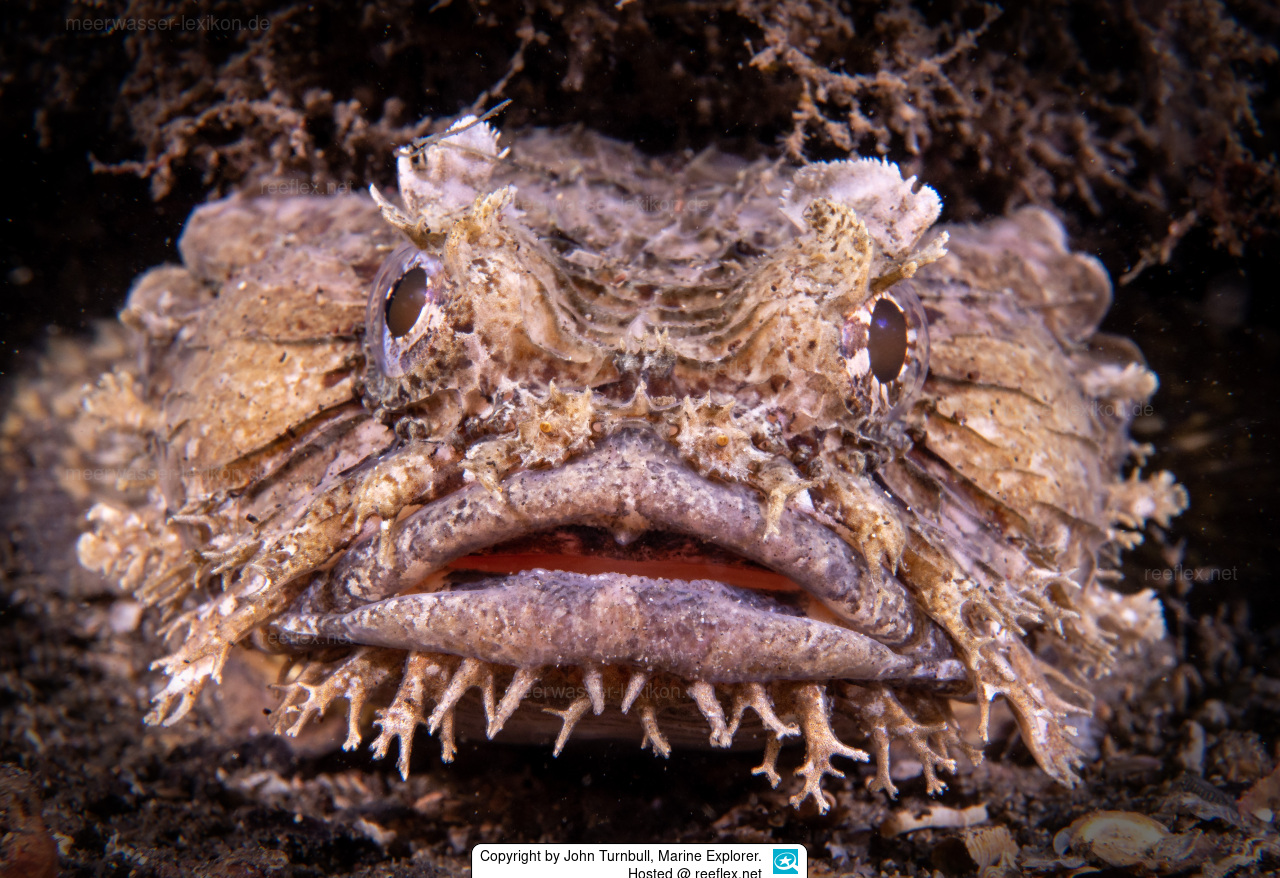Info
Toadfish are not good swimmers, so they rely on their food approaching them to be sucked in at lightning speed by the predator's large mouth.
To prevent potential prey from immediately noticing the predator, it lies quite still on the seafloor and is camouflaged by a multitude of longer, shaggy barbels, perhaps meant to resemble algae.
In addition, the body coloration usually stands out little from the respective substrate (camouflage), so that the sluggish predator rarely remains hungry.
Synonyms:
Batrachomoeus minor Ogilby, 1908
Lophius dubius White, 1790
Lophius nigricans Forster, 1794
Pelophiletor caloundrae Ogilby, 1907
Pseudobatrachus dubius (White, 1790)
Pseudobatrachus striatus Castelnau, 1875
Thalassophryne coeca De Vis, 1884
To prevent potential prey from immediately noticing the predator, it lies quite still on the seafloor and is camouflaged by a multitude of longer, shaggy barbels, perhaps meant to resemble algae.
In addition, the body coloration usually stands out little from the respective substrate (camouflage), so that the sluggish predator rarely remains hungry.
Synonyms:
Batrachomoeus minor Ogilby, 1908
Lophius dubius White, 1790
Lophius nigricans Forster, 1794
Pelophiletor caloundrae Ogilby, 1907
Pseudobatrachus dubius (White, 1790)
Pseudobatrachus striatus Castelnau, 1875
Thalassophryne coeca De Vis, 1884







 Dr. John Turnbull, Marine Explorer, Australien
Dr. John Turnbull, Marine Explorer, Australien






